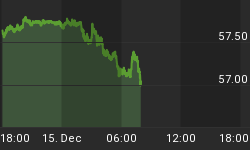December is traditionally one of the best months for stocks, and the S&P 500 index is oversold at current levels. An increase of the index to 1470 is in the cards.
Sandy hits
The Federal Reserve estimated hurricane Sandy might have decreased the rate of change in total output by almost 1% in October. In effect, initial jobless claims have jumped lately, and growth might be below 2.0% in the fourth quarter of the year. Nonetheless, the effects of Sandy on the economy should be only temporary and contained. Production can pick up again, and the housing recovery is proceeding smoothly. The National Association of Home Builder index (NAHB) has grown for seven months in a row and has touched its highest number since 2006. Construction is improving, and prices are beginning to rise as well. If history repeats itself, new highs could be reached within three to five years from the bottom (2010).
Durable goods were, instead, unchanged in October after rising more than 9% in September. However, excluding transportation, new orders were up 1.5%. Growth should stay near 2% this year, while inflation is within the Federal Reserve range for now. The U.S. government can lower the federal deficit by extending all previsions with the exception of unemployment benefits and the payroll tax holiday. Furthermore, it should postpone the spending cuts, known as the "sequester." Healthcare reform taxes will soon be introduced. Finally, quantitative easing three (QE3) will be confirmed. In January, the Fed could use U.S. Treasury purchases as well as mortgage-backed security (MBS) purchases.
Unemployment: Declining short-term, increasing longer-term
Stocks could increase until year's end. Technically, the S&P 500 index has rebounded from the long-term trend line of the past twelve months and appears to be ready to jump higher; December is typically one of the best months of the year. Finally, at current levels, the index is oversold, and there is strong divergence with price and the Relative Strength Index (RSI). The first target could be 1430, and then 1470 if 1440 is cleared. Policy makers now have the responsibility of keeping the tiny momentum going. In the "Beige Book" published last week, the Fed described a weakened economy; concerns over fiscal matters are now surfacing. Business owners must know what kind of costs and benefits are to be expected next year. The U.S. business sector will probably mark another financing surplus in the third quarter of 2012. Businesses have stocked cash for three consecutive years. It will be reinvested once the fiscal challenge is overcome. However, lack of clarity will instead contract investments and reduce employment opportunities. In reality, a new rise in the unemployment rate, which topped last in 2009 at 10%, is possible between the end of 2013 and 2014. Why? Since 1945, the unemployment rate has had two bull cycles, which have expanded in three different waves. Corrections during the final wave have lasted for four (1975-1979) and two (1958-1960) years before prices rose for the final peak. Declines stretched for 38% and 33% respectively.
















